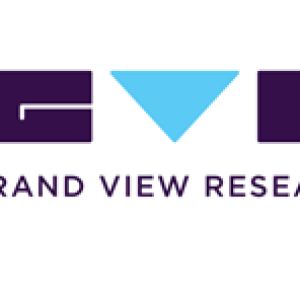Know More About ‚ÄúInternet Of Things In Retail Market 2021-2028‚Äù Growth Worldwide‚Ķ..Posted by Mrudula Anil Karmarkar on August 29th, 2023 The global internet of things in retail market size is expected to reach USD 182.04 billion by 2028, registering a CAGR of 26.0% over the forecast period, according to a new report by Grand View Research, Inc. The growth can be attributed to the adoption of connected technologies by retailers against e-commerce sites. The reducing cost of hardware and IoT sensors, demand for a seamless shopping experience, and growing acceptance of smart payment are the factors expected to further fuel the growth of the internet of things (IoT) in retail market. The tectonic shift in optimizing retail operations is triggering IoT adoption. Retailers are experimenting with IoT, which allows them to determine the purchase history and customer’s profile by synchronizing with wearable devices. The adoption of common standards and the proliferation of connected devices are augmenting the growth of IoT-enabled capabilities across the retail industry. Moreover, the technology provides endless capabilities and improvements in the retail sector and enables retailers to explore customer behavior, optimize productivity, and create new business models. IoT devices also help in the back-end operations of retailers, such as planning effective logistics operations. The IoT-connected sensors, GPS trackers, and RFID tags track the movement of goods in real-time, providing seamless supply chain management. This also prevents spoilage, damage, or loss of goods during transportation, mainly beneficial for perishable food items. The real-time information of weather, traffic conditions, and speed of vehicles enable intelligent logistics operation. Moreover, factors such as effective inventory management, reduced human errors, minimized overstocking and shortage of products, and control over storage conditions are driving the demand for IoT devices in retail warehousing. IoT offers retailers an opportunity to develop an improved ecosystem that connects the digital and physical worlds. Retailers are utilizing the advantage of the wide range of connected products by adopting an integration platform. Moreover, smart devices reduce the buying time of customers and provide a seamless shopping experience. Retailers are slowly evolving to explore advanced ways to connect with smart devices such as smartphones and smartwatches for enhancing the in-store experience. Europe is the third-largest adopter of IoT, followed by North America and the Asia Pacific. Germany, the U.K., France, and Italy are at the forefront of the adoption of advanced retail technologies. The presence of multinational retail brands such as H&M and ZARA has further fueled the demand for IoT solutions in retail stores. These companies are investing in digital technologies to meet the continuously changing customer demand. Recently, H&M announced that the RFID technology would be implemented in more stores in the coming years. The company has already implemented the Azure IoT platform in its flagship stores. To Request Sample Copy of this report, click the link: https://www.grandviewresearch.com/industry-analysis/internet-of-things-iot-retail-market/request/rs1 The growth can be attributed to the inclusion of digital and in-store operations in the retail sector. IoT is expected to revamp the retail industry, transforming traditional brick and mortar shops into advanced digital stores. The technology provides a competitive edge to the retailers with the help of smart shelves and RFID tags, which detect low inventory and track the movement of the respective goods. The adoption of IoT technology helps retailers to effectively manage in-store operations and provide an improved shopping experience to their customers. Factors such as effective store premise monitoring, inventory management, supply chain management, and customer behavior observation are driving the demand for internet of things (IoT) in retail market. Optimizing and automating the supply chain is one of the prime factors for the adoption of IoT among retailers. Connecting technologies, including digital signage, on-shelf displays, beacons, and price tickers, provide opportunities for a brand to gain access to a high amount of data on customer activity during in-store shopping. Internet Of Things In Retail Market Report Highlights
The retail landscape has experienced a seismic shift with the evolution of Artificial Intelligence (AI) and Augmented Reality (AR) in retail stores. Retailers use AI to understand the buying patterns of old customers, identify the target audience, and offer customized product ads to their customers. Moreover, AI has offered its conventional capability for conversational commerce, as retailers are incorporating chatbots with messaging applications, allowing users to interact with their brands. IoT in retail has enabled retailers to set up an automated checkout system using IoT devices. The automated checkout systems contribute to high customer satisfaction, resulting in higher footfalls, especially during a time crunch. For instance, Nayasale Retail Pvt Ltd., an Indian start-up, is a fully AI-powered autonomous retail store in Kerala (India), which features an automated checkout system, eliminating the need for any cashiers or salespersons. The retail store concept is in line with Amazon Go, which facilitates customers to pick their choice of items and use the automated checkout system. The Amazon Go store relies on weight sensors to understand the items picked by the shoppers. COVID-19 Impact The pandemic has profoundly impacted worldwide IoT spending, including that of the retail industry. Several new projects have been put on hold by the retailers as their primary focus was on the continuation of business operations during the economic crisis. Moreover, the technology roadmap for IoT has been delayed by the companies due to remote working limitations. As a result, the IoT in retail market has witnessed a decline in revenue in 2020 compared to 2021. However, the adoption of IoT in retail is expected to gradually increase in late 2021. Retailers are already implementing mobile payment systems, autonomous cleaning robots, and contactless checkout kiosks to reduce human interference and curb the spread of the coronavirus. Post the pandemic, AI technology, cloud services, and automation are expected to power the retail industry for years to come. List of Key Players in the Internet Of Things In Retail Market
Like it? Share it!More by this author |


